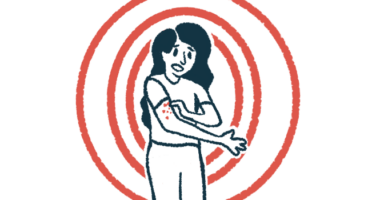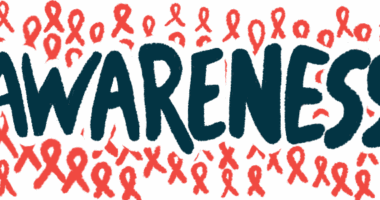Itching was main sign of teen’s liver disease: Case report
Symptoms resolved in months with UDCA treatment

Itching was the main symptom leading to the diagnosis of progressive familial intrahepatic cholestasis (PFIC) type 3 in a teenage boy in Portugal, a case study reported.
The boy’s symptoms resolved within two months after starting ursodeoxycholic acid (UDCA), a first-line cholestasis treatment marketed as Actigall and Urso in the U.S. and also available in generic form.
“Given the progressive nature of the disease and the potential for long-term complications, regular surveillance is crucial to monitor liver function, assess for signs of cirrhosis or malignancy and manage any emerging complications early,” the researchers wrote. Cirrhosis refers to irreversible liver scarring.
The case report, “Comprehensive overview of progressive familial intrahepatic cholestasis type 3 and the importance of pruritus as a diagnostic clue,” was published in BMJ Case Reports.
PFIC is a group of rare, genetic diseases that disrupt the normal production or transport of bile, a digestive fluid, in the liver, leading to stalled bile flow, or cholestasis. As bile builds up, it can damage the liver and leak into the bloodstream, causing cholestasis symptoms such as itching (pruritus), dark-colored urine, and jaundice (yellowing of the skin and white parts of the eyes). Without treatment, PFIC can set the stage for cirrhosis, liver failure, and liver cancer.
Itchy hands and feet
There are several PFIC types, each caused by mutations in different genes. PFIC type 3 (PFIC3) is caused by mutations in both copies of the ABCB4 gene. These mutations disrupt the production or function of MDR3, a protein that helps neutralize bile components to prevent damage to bile ducts, or the tubes that transport bile.
The boy in the case report, described as “a late adolescent,” had suffered from severe itching in the palms and soles of the feet for two months when he arrived at the researchers’ hospital.
“It all started with an itching sensation in my feet and legs,” the boy said. “At the beginning, we thought it was something that would go away fast and that could be treated with some cream.”
However, he said, “a few days later, what seemed to be a normal day became a nightmare,” with “unbearable abdominal pain.”
The boy said he had had intermittent episodes of dark urine since birth, and had been experiencing sporadic abdominal pain lasting up to two hours since he was 10. These episodes of abdominal pain were associated with periods of constipation alternating with periods of diarrhea. He was hospitalized at age 10 with an acute gastrointestinal infection. At that time, blood levels of liver enzymes were slightly increased, which can indicate liver damage.
”This disease is still something I don’t understand….It could have been something that affected me a lot, but surprisingly, it didn’t.”
Examination at the researchers’ hospital showed the boy was short for his age and had abdominal tenderness and an enlarged liver, but normal psychomotor development.
Blood tests indicated elevated levels of liver damage markers, including liver enzymes, bile acids (bile’s main components), bilirubin, and lactate dehydrogenase. An abdominal ultrasound and MRI scan confirmed that he had an enlarged liver and an enlarged spleen, but showed no abnormalities in the bile ducts or pancreas.
Further testing excluded viral infections and autoimmune liver diseases. Considering these findings, the researchers conducted testing for a cholestasis genetic panel that revealed the presence of two mutations in the ABCB4 gene — one in each gene copy, called c.874A>T and c.1415T>C — that confirmed a PFIC3 diagnosis.
“This approach allowed for the confirmation of the disease without the need for an invasive liver biopsy,” the researchers wrote.
The boy was started on UDCA, which resolved his symptoms in two months. Liver enzyme levels were lower after five months. Blood bile acid levels dropped significantly after two months of treatment, and declined further after six months.
“In this case, pruritus was the dominant feature that led to the diagnosis of a rare disease and allowed for appropriate management,” the researchers wrote. “Pruritus relief is crucial given its significant impact on patients’ quality of life and can result in liver transplantation.”
The boy’s clinical response to UDCA was favorable, and escalation to other PFIC-approved treatments, such as Bylvay (odevixibat) and Livmarli (maralixibat), was not necessary.
“This disease is still something I don’t understand,” the boy said. “I continue living my life as I did before discovering the illness, but with some precautions, such as not drinking alcohol. It could have been something that affected me a lot, but surprisingly, it didn’t.”







